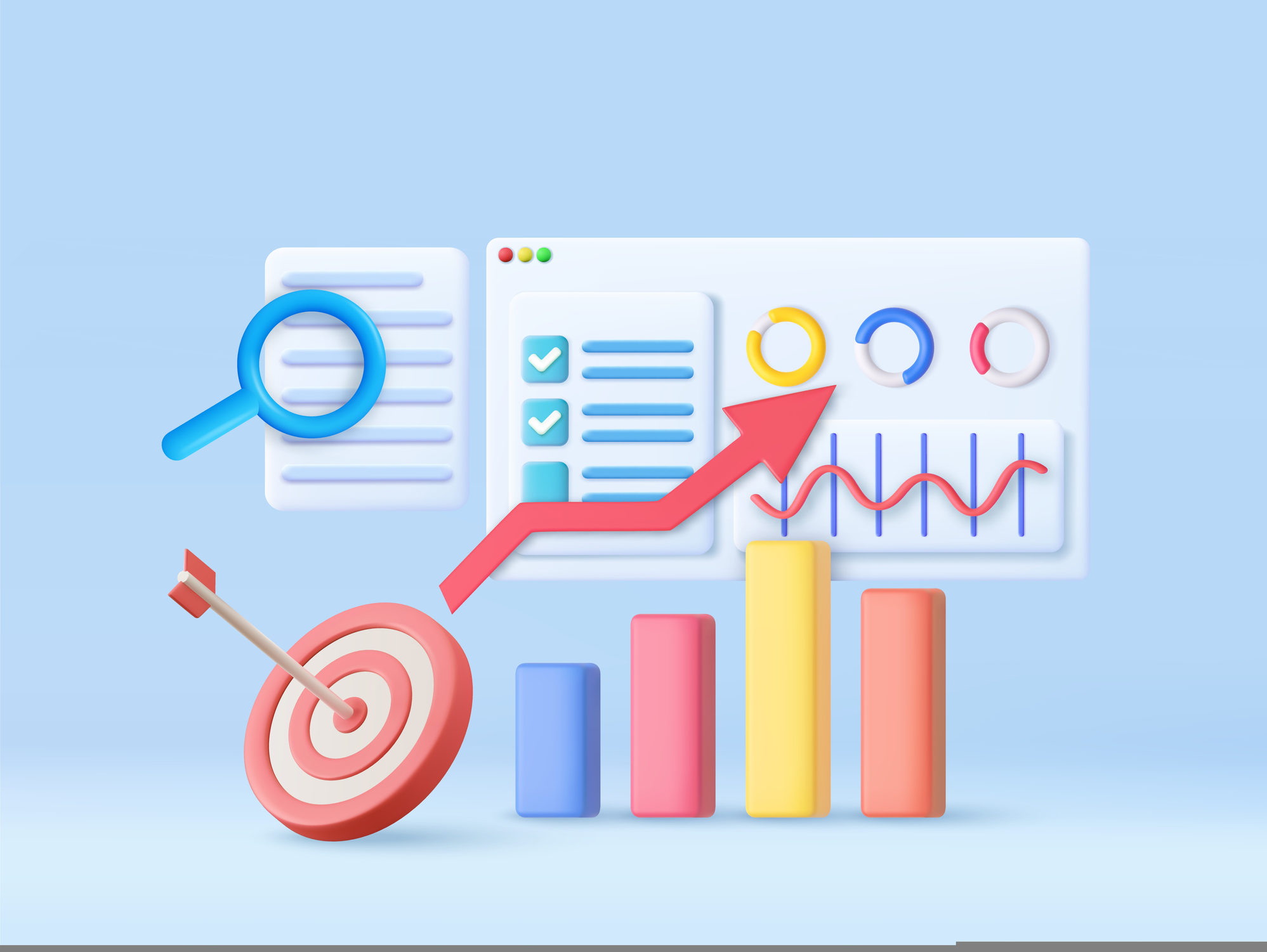Content marketing is a powerful approach to engaging with your audience, building brand authority, and driving business growth. However, to ensure that your content marketing efforts are effective and delivering value, it’s crucial to measure and analyze various metrics. These metrics help you understand how well your strategy is performing and where adjustments may be needed. In this comprehensive guide, we’ll explore nine essential content marketing metrics to measure your strategy’s ROI and ensure your content efforts are yielding the desired results.
1. Website Traffic
1.1 Importance of Tracking Website Traffic
Website traffic is a fundamental metric for assessing the reach and visibility of your content. Increased traffic typically indicates that your content is attracting and engaging your target audience. Monitoring website traffic helps you understand the effectiveness of your content in driving visitors to your site.
1.2 Key Metrics to Track
- Total Visits: The overall number of visits to your website.
- Unique Visitors: The count of individual users visiting your site.
- Page Views: The total number of pages viewed by visitors.
1.3 Tools for Measuring Website Traffic
Use analytics tools such as Google Analytics, SEMrush, or Ahrefs to track website traffic. These tools provide insights into visitor behavior, sources of traffic, and page performance.
2. Engagement Metrics
2.1 Understanding Engagement
Engagement metrics measure how actively your audience interacts with your content. High engagement indicates that your content resonates with your audience and encourages them to take action.
2.2 Key Engagement Metrics
- Time on Page: The average amount of time visitors spend on a page.
- Bounce Rate: The percentage of visitors who leave your site after viewing only one page.
- Pages Per Session: The average number of pages viewed during a single visit.
2.3 Tools for Tracking Engagement
Google Analytics, Hotjar, and Crazy Egg are effective tools for monitoring engagement metrics. These tools provide insights into user interactions and content performance.
3. Conversion Rate
3.1 What is Conversion Rate?
The conversion rate measures the percentage of visitors who complete a desired action, such as filling out a form, subscribing to a newsletter, or making a purchase. It’s a critical metric for evaluating the effectiveness of your content in driving valuable actions.
3.2 How to Calculate Conversion Rate
Conversion Rate = (Number of Conversions / Total Visitors) x 100
3.3 Tools for Measuring Conversion Rate
Use tools like Google Analytics, HubSpot, or Unbounce to track and analyze conversion rates. These platforms offer features to set up and monitor conversion goals.
4. Lead Generation
4.1 Importance of Lead Generation
Lead generation metrics help you assess how well your content is capturing potential customers’ contact information and interest. Effective lead generation indicates that your content is successfully nurturing prospects and moving them through the sales funnel.
4.2 Key Lead Generation Metrics
- Number of Leads: The total count of leads generated from your content.
- Lead Quality: The assessment of how well leads match your ideal customer profile.
- Cost Per Lead (CPL): The average cost associated with acquiring a lead.
4.3 Tools for Tracking Leads
CRM systems like Salesforce, HubSpot, and Marketo offer robust features for tracking and managing leads. They provide insights into lead sources, quality, and costs.
5. Social Media Metrics
5.1 The Role of Social Media Metrics
Social media metrics gauge the performance of your content across social media platforms. These metrics help you understand how well your content is being received, shared, and engaged with on social media.
5.2 Key Social Media Metrics
- Shares: The number of times your content is shared by users.
- Likes and Comments: The number of likes and comments your content receives.
- Social Referrals: The amount of traffic driven to your website from social media platforms.
5.3 Tools for Measuring Social Media Metrics
Use social media analytics tools such as Hootsuite, Buffer, and Sprout Social to track and analyze social media performance. These tools provide comprehensive reports on engagement, reach, and interactions.
6. SEO Performance
6.1 Understanding SEO Performance
SEO performance metrics measure how well your content is ranking in search engine results pages (SERPs). High SEO performance indicates that your content is optimized for search engines and attracting organic traffic.
6.2 Key SEO Metrics
- Organic Traffic: The number of visitors coming from search engines.
- Keyword Rankings: The positions of your target keywords in search results.
- Backlinks: The number and quality of external sites linking to your content.
6.3 Tools for Tracking SEO Performance
Use SEO tools like Google Search Console, Moz, and SEMrush to monitor keyword rankings, organic traffic, and backlinks. These tools provide insights into your content’s search engine visibility and performance.
7. Return on Investment (ROI)
7.1 Calculating ROI
ROI measures the financial return on your content marketing investments. It’s a crucial metric for evaluating the overall effectiveness of your content strategy and justifying your marketing spend.
7.2 How to Calculate ROI
ROI = (Net Profit / Content Marketing Costs) x 100
7.3 Tools for Measuring ROI
Use analytics and financial tools like Google Analytics, HubSpot, and financial reporting software to track and calculate ROI. These tools help you assess the financial impact of your content marketing efforts.
8. Customer Retention Metrics
8.1 Importance of Customer Retention
Customer retention metrics measure how well your content is contributing to retaining existing customers. High retention rates indicate that your content is providing ongoing value and keeping customers engaged.
8.2 Key Customer Retention Metrics
- Customer Retention Rate: The percentage of customers who continue to engage with your brand over time.
- Churn Rate: The percentage of customers who stop engaging with your brand.
8.3 Tools for Tracking Retention Metrics
CRM systems like Salesforce, customer success platforms like Gainsight, and customer feedback tools can help monitor and analyze customer retention metrics. These tools provide insights into customer behavior and engagement.
9. Brand Awareness
9.1 Measuring Brand Awareness
Brand awareness metrics assess how well your content is increasing recognition and visibility of your brand. Higher brand awareness means that more people are familiar with your brand and its offerings.
9.2 Key Brand Awareness Metrics
- Brand Mentions: The number of times your brand is mentioned online.
- Share of Voice: The percentage of conversations about your industry that mention your brand.
- Audience Reach: The total number of people exposed to your content.
9.3 Tools for Measuring Brand Awareness
Social listening tools like Mention, Brandwatch, and Google Alerts can help track brand mentions, share of voice, and audience reach. These tools provide insights into how your brand is perceived and discussed online.
Measuring the ROI of your content marketing strategy is essential for understanding its effectiveness and making data-driven decisions. By tracking and analyzing these nine key content marketing metrics—website traffic, engagement metrics, conversion rate, lead generation, social media metrics, SEO performance, ROI, customer retention, and brand awareness—you can gain valuable insights into your content’s performance and impact. Leveraging these metrics helps you refine your strategy, optimize your content, and ultimately drive greater business growth.
FAQ
Q1: Why is it important to measure content marketing ROI?
Measuring content marketing ROI is crucial for understanding the effectiveness of your content strategy and justifying your marketing investments. It helps you evaluate how well your content is performing in terms of generating leads, driving traffic, and contributing to overall business goals.
Q2: How can I improve my content marketing ROI?
To improve your content marketing ROI, focus on creating high-quality, valuable content that resonates with your audience. Optimize your content for SEO, track key metrics, and adjust your strategy based on performance data. Investing in targeted promotions and distribution channels can also enhance ROI.
Q3: What tools can I use to track content marketing metrics?
Popular tools for tracking content marketing metrics include Google Analytics, HubSpot, SEMrush, Moz, Hootsuite, Buffer, and social listening tools like Mention and Brandwatch. These tools provide insights into website traffic, engagement, SEO performance, and social media metrics.
Q4: How often should I review my content marketing metrics?
Regularly review your content marketing metrics to ensure that your strategy is on track and delivering results. Monthly or quarterly reviews are common, but the frequency can vary based on your content goals and the pace of your marketing activities.
Q5: What is the difference between lead generation and conversion rate metrics?
Lead generation metrics focus on the number of potential customers captured through your content, while conversion rate metrics measure the percentage of visitors who complete a desired action, such as making a purchase. Both metrics are important for assessing different stages of the customer journey.
Get in Touch
Website – https://www.webinfomatrix.com
Mobile - +91 9212306116
Whatsapp – https://call.whatsapp.com/voice/9rqVJyqSNMhpdFkKPZGYKj
Skype – shalabh.mishra
Telegram – shalabhmishra
Email - info@webinfomatrix.com

.jpg)
.jpg)




.jpg)

 English (US) ·
English (US) ·